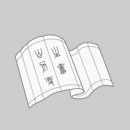
How to Read Chinese Drama A Guided Anthology 如何阅读中国戏剧 导读选集 英文原版
¥ 280 7.5折 ¥ 375 九五品
库存2件
广东广州
认证卖家担保交易快速发货售后保障
作者Patricia Sieber
出版社Columbia University
ISBN9780231186490
出版时间2022-01
印刷时间2022-01
印数1千册
装帧平装
纸张轻型纸
页数480页
字数1千字
定价375元
上书时间2024-07-16
- 在售商品 暂无
- 平均发货时间 16小时
- 好评率 暂无
- 最新上架
商品详情
- 品相描述:九五品
- 商品描述
-
基本信息
Format Paperback | 480 pages
Dimensions 216 x 279 x 33.02mm | 1,111.3g
Publication date 25 Jan 2022
Publisher Columbia University Press
Publication City/Country New York, United States
Language English
ISBN10 0231186495
ISBN13 9780231186490
书籍信息仅供参考,具体以实物为准
书籍简介
本书详细地介绍了中国戏剧的文学形式和作为文本和表演的文化意义。每一章都对一部或多部戏剧--经典作品和不常研究的作品--及其历史背景进行了易懂的概述和批评分析。《如何阅读中国戏剧》强调了每部戏剧如何揭示戏剧传统的关键方面,包括流派惯例、舞台实践、音乐表演、观众参与和政治共鸣,并强调了各章之间的相互联系。本书汇集了人类学、艺术史、民族音乐学、历史、文学和戏剧研究等领域的杰出学者。
《如何阅读中国戏剧》直截了当、清晰、简明,是为本科生和他们的导师以及对世界戏剧感兴趣的广大读者而写。对于中国文学和语言的学生来说,本书提供了在阅读、观看和聆听戏剧时需要探讨的问题,并有双语摘录。对于教师来说,分析性的目录、针对戏剧的事件年表以及视觉资源和译文清单为在更广泛的文化和比较背景下探索中国戏剧提供了教学资源。对于戏剧从业者来说,该书提供了经过深入研究的重要戏剧读本,以及关于历史表演惯例、观众反应和精选的现代改编作品的背景。
This book is a comprehensive and inviting introduction to the literary forms and cultural significance of Chinese drama as both text and performance. Each chapter offers an accessible overview and critical analysis of one or more plays-canonical as well as less frequently studied works-and their historical contexts. How to Read Chinese Drama highlights how each play sheds light on key aspects of the dramatic tradition, including genre conventions, staging practices, musical performance, audience participation, and political resonances, emphasizing interconnections among chapters. It brings together leading scholars spanning anthropology, art history, ethnomusicology, history, literature, and theater studies.
How to Read Chinese Drama is straightforward, clear, and concise, written for undergraduate students and their instructors as well as a wider audience interested in world theater. For students of Chinese literature and language, the book provides questions to explore when reading, watching, and listening to plays, and it features bilingual excerpts. For teachers, an analytical table of contents, a theater-specific chronology of events, and lists of visual resources and translations provide pedagogical resources for exploring Chinese theater within broader cultural and comparative contexts. For theater practitioners, the volume offers deeply researched readings of important plays together with background on historical performance conventions, audience responses, and select modern adaptations.
作者简介
Patricia Sieber是俄亥俄州立大学中文系副教授。她是《欲望的剧场:作者、读者和早期中国歌舞剧的复制,1300-2000》(2003)的作者。
雷吉娜-S. Llamas是西班牙IE大学的人文科学副教授。她是《毕业生张协:现存较早的中国南方戏剧》(哥伦比亚大学,2021)的译者。
Patricia Sieber is associate professor of Chinese at Ohio State University. She is the author of Theaters of Desire: Authors, Readers, and the Reproduction of Early Chinese Song-Drama, 1300-2000 (2003).
Regina S. Llamas is associate professor in the humanities at IE University, Spain. She is the translator of Top Graduate Zhang Xie: The Earliest Extant Chinese Southern Play (Columbia, 2021).
目录
Contents
Thematic Contents
Preface to the How to Read Chinese Literature Series
A Note on How to Use This Anthology
Chronology of Historical Events
Symbols, Abbreviations, and Typographical Usage
Introduction: The Cultural Significance of Chinese Drama
Patricia Sieber and Regina Llamas
Part I: Yuan and Ming Dynasties: Zaju Plays
1. The Story of the Western Wing: Tale, Ballad, and Play
Wilt L. Idema
1.1 Yuan Zhen's (779-831) "The Tale of Oriole"
1.2 Story of the Western Wing in All Keys and Modes: "The Tale of Oriole" in Narrative Ballads
1.3 *The Story of the Western Wing: Student Zhang and Oriole on Stage
1.4 Controversies in the Ming and Qing Dynasties
2. Purple Clouds, Wrong Career, and Tiger Head Plaque: Jurchen Foreigners in Early Drama
Stephen H. West
2.1 Approaches to the Foreign
2.2 Wrong Career and Purple Cloud: Jurchen Performers in the World of Entertainment
2.3 The Tiger Head Plaque: Jurchen Performers in Their Native Lands
3. The Pavilion for Praying to the Moon and The Injustice to Dou E: The Innovation of the Female Lead
Patricia Sieber
3.1 Guan Hanqing (ca. 1220-after 1279), Zhulian xiu (fl. 1270-1300), and the Acting Culture of Yuan Zaju Theater
3.2 The Pavilion for Praying to the Moon: The Moral Suasion of Situational Ethics
3.3 The Injustice to Dou E: The Disruptive Power of Filial Remonstration
4. The Story of the Western Wing: Theater and the Printed Image
Patricia Sieber and Gillian Yanzhuang Zhang
4.1 Image-Making Between Self-Expression and Commerce
4.2 *The Story of the Western Wing: The Deluxe Edition (1499)-an App for Singing
4.3 The Story of the Western Wing: The Glossed Edition (c. 1609)-an App for Role-Playing
4.4 The Story of the Western Wing: The Exclusive Edition (1639-1640)-an App for Virtual Reality
5. The Orphan of Zhao: The Meaning of Loyalty and Filiality
Shih-pe Wang
5.1 Historical Background
5.2 The Orphan of Zhao: How the Yuan Zaju Play Dramatizes the Story
5.3 *The Orphan of Zhao, Wedge: The Confrontation between Good and Evil
5.4 *The Orphan of Zhao, Act 1: How the Orphan Was Smuggled Out
5.5 The Orphan of Zhao, Act 2: To Die or to Live On
5.6 The Orphan of Zhao, Act 3: A Play Performed for the Eyes of the Villain
5.7 The Orphan of Zhao, Acts 4 (and 5): Truth and Revenge
5.8 The Orphan of Zhao: Twenty-First-Century Adaptations
6. The Female Mulan Joins the Army in Place of Her Father: Gender and Performance
Shiamin Kwa
6.1 Xu Wei (1521-1593) and His Quartet of Ming Zaju Plays
6.2 Mulan: The Two-Act Structure
6.3 *Mulan: Changing Clothes
6.4 Mulan: Gentle Men
6.5 Mulan: Happily Ever After
Part II: Ming Dynasty and Early Qing Dynasty: Nanxi and Chuanqi Plays
7. Top Graduate Zhang Xie and The Lute: Scholar, Family, and State
Regina Llamas
7.1 Top Graduate and The Lute: Background
7.2 Top Graduate and The Lute: The Prologues
7.3 Top Graduate and The Lute: The Ungrateful Scholar
7.4 *The Lute: The Husk Wife
7.5 *Top Graduate and The Lute: Language and Comedy
8. The Southern Story of the Western Wing: Traditional Kunqu Composition, Interpretation, and Performance
Joseph S. C. Lam
— 没有更多了 —















以下为对购买帮助不大的评价